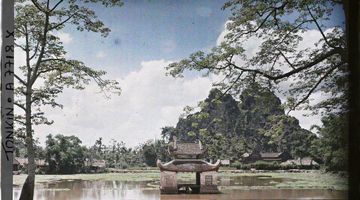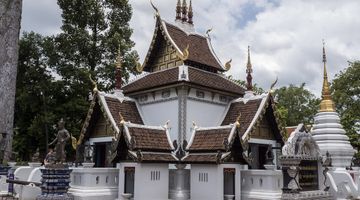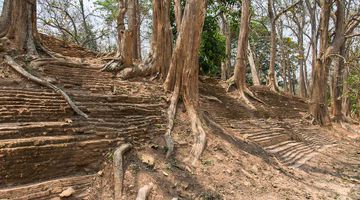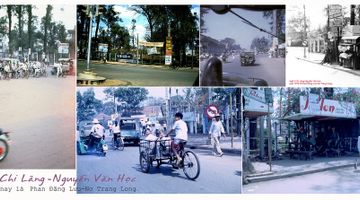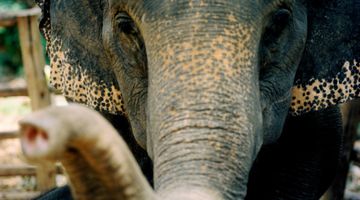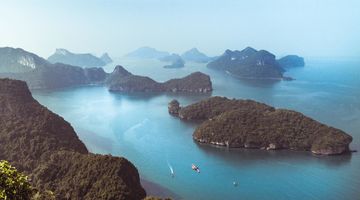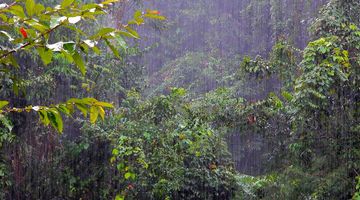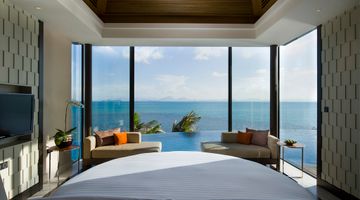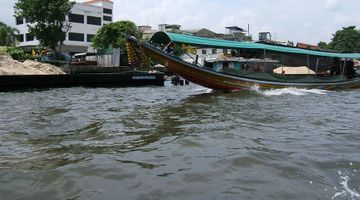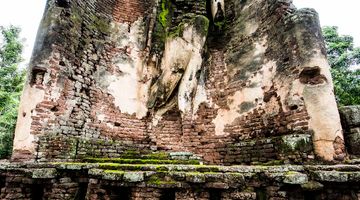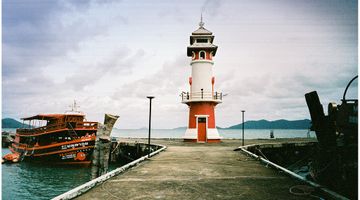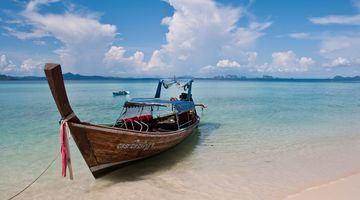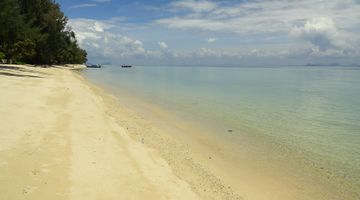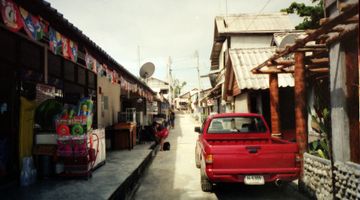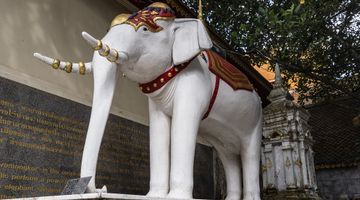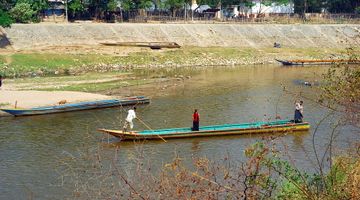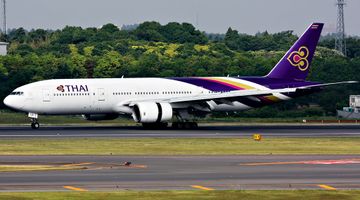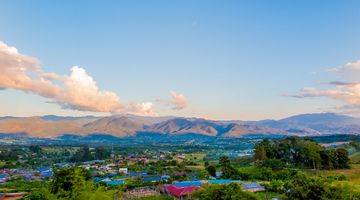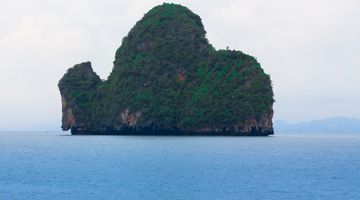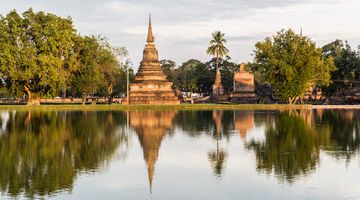Trang Travel Guide
In a nutshell
Derived from a Malay word meaning ‘dawn’ or ‘bright’, Trang is located south of the more well known Krabi province. A food and cultural delight, it remains remarkably under the radar and off the beaten path.
Why go to Trang
Like other towns in Thailand, Trang is mainly used by foreigners as a gateway to the province’s breath-taking islands. With its variety of access points, including planes, trains and automobiles and only an hour drive to the coast, it’s a no-brainer why they choose it as a hub to head to quieter, less touristic places.
Love multiculturalism? Trang town packs a charming punch with a melting pot of Thai, Chinese, and Western cultures. These are reflected in its Sino-Portuguese architecture and its mixture of shrines, mosques, and temples residing harmoniously together.
If requiring a more authentic taste, walk through the town and its two major markets and experience the daily life of the friendly locals.
Festival goers beware, Trang does not lack in this department either as there is something happening every month. Among the more notable ones are the Trang Food Festival, and Trang Cake Festival.
For the incessant nature lovers, Trang does not disappoint. With a landscape similar to that of Krabi and Phang Nga, it boasts stunning islands, amazing beaches, and awe-inspiring limestone mountains. The abundance of forests, wildlife, and waterfalls around the province make it a paradise destination for trekkers.
When to go to Trang
Trang’s prime is between December and May. Following the season of the Andaman, rains fall between May and September with monsoons hitting hardest from September to November. Temperature is pretty consistent year round with April being the hottest month.
Where to stay in Trang
Most accommodation in Trang town is positioned near the train station and along Phra Rama VI Road. It has a variety of places from hostels to boutique resorts, and with so much competition it grants the opportunity to score quality rooms at affordable prices.
A number of properties in the main area provide balconies, great for kicking back with a beer or affording views of the bustling morning market. Some of the more basic, fan only rooms start at THB350, while the more modern abodes including air-conditioning start at THB750.
Travellers heading to the islands in the area can expect an array of accommodation, though not on every island. There is everything from tents, basic bungalows, up to fully modern en-suite with balconies. Each island that is inhabited has its own variety and there may not be many to choose from.
Where to eat in Trang
Only seeing a trickle of visitors, Trang offers a charming atmosphere and delightfully varied culinary scene. Its multicultural character is reflected in Chinese style dim sum, and a variety of southern style curries. Popular dishes consist of beef curry (gaeng nuea) and sour orange curry with fish (gaeng som). Its close proximity to the coast provides fresh and inexpensive seafood.
One of the finest night markets on the Andaman coast pops up daily near the Dugons’ roundabout and serves up savoury dishes of curry, fried chicken, fresh fruit and Thai sweets. On weekends, a second night market springs to life with a livelier vibe and is the ultimate spot to graze on deep-fried snacks, seafood, and grilled meats.
For the early riser there is an extensive morning market selling the usual Thai fare, as well as home goods and clothes. A typical start to the day consists of the local coffee, a bitter wood-fired brew sweetened with condensed milk, Chinese steamed buns and crispy roast pork.
How to get around Trang
As a smaller city, Trang is fairly straight forward to navigate. Easily walkable, but if preferred it is possible to hire one of their more unusual tuk-tuks. The local tuk-tuk is a mix between the normal 3 wheeled style famous around the streets of Bangkok and a songthaew with two bench seats in the back. These light green coloured tricycle style pickups were imported from Japan during World War II, where only about 200 out of the original 700 remain. Rides in these unique form of passage are reasonably cheap. A number of songthaews and mototaxis loop around town. Anyone wishing to ride further out of town can rent a motorbike for around THB200 per day.
How to get in and from Trang
Since Trang is often used as a transportation hub for travellers heading to the islands, it has airport, bus, railway and ferry access.
The airport is located 8 km south of the city centre and is serviced by 3 different airlines. Air Asia operates 3 flights daily at 7.55 am, 1 pm, and 4.50 pm and takes about 1 1/2 hours from Bangkok. Nok Air has 2 daily flights at 7 am and 4 pm, while Thai Lion Air has 3 flights at 9.45 am, 2.05 pm and 5.15 pm, with the exception of Tuesday mornings at 10 am.
Rapid and Express trains depart Bangkok’s Hua Lumphong Railway Station at 5.05 pm and 6.20 pm every day. Depending on the class, tickets range from THB700 to THB1800 and the journey takes approximately 16 hours.
Buses leave Bangkok daily from the Southern Bus Terminal. One bus leaves at 7 am, while the rest leave from 4.30 pm to 7 pm and are overnight trips. There are standard and VIP available and the trip takes around 12 hours. Tickets cost between THB600 to THB1000.
For those travellers who are nearby, regular bus service to and from neighbouring provinces include Hat Yai, Satun, Krabi, Koh Lanta, and Phuket.
Minivans also depart from various depots throughout the town to major cities such as Hat Yai (THB100), Surat Thani (THB130), Koh Lanta (THB120), Hat Jao Mai (THB50), Pak Meng (THB50) and Sikao (THB50).
Is Trang safe?
Although Muslim insurgents in the Deep South have been fighting for years, it does not effect Trang or its province. Trang is quite a safe tourist destination, as it’s a sleepy quiet town that is most active in the early mornings. This may have originated from Trang’s days in the rubber harvesting industry when locals would catch up over breakfast after working through the night.
If in need of medical assistance Trang has 3 main hospitals, though Trang Hospital is government run and mostly caters to Thais. Wattanapat Hospital may be the most suited for international travellers as it has a wide range of specialties and equipment and unlike Trang Ruampat Hospital (privately owned), it seems to have more English speaking staff.
